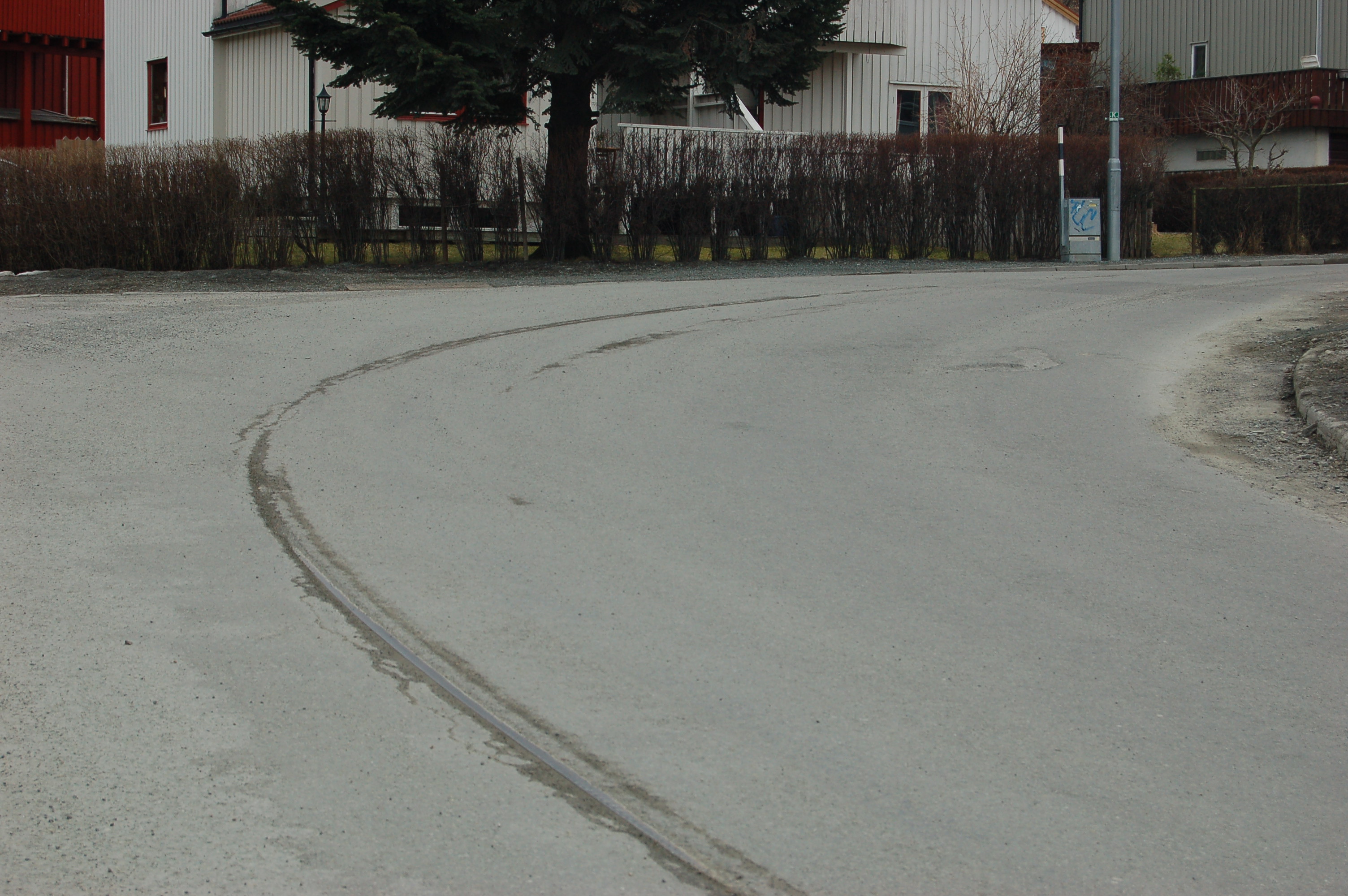- Singsaker Line
Infobox rail line
name = Singsaker Line
nativename = Singsakerlinjen
caption = Remains of Singsakerlinjen at Rosenborg
type =Tramway
system =Trondheim Tramway
status = Abandoned
start = Studentersamfundet
end = Rosenborg
stations =
open = 1927
close = 1968
owner = City of Trondheim
operator =Trondheim Sporvei
character =
stock =
linelength =
tracklength =
notrack = Double
gauge = RailGauge|1
el =
speed =
elevation =
BS-table|The Singsaker Line ( _no. Singsakerlinjen) was a
tramway line in theTrondheim Tramway betweenElgeseter viaSingsaker to Rosenborg inTrondheim ,Norway . The tram line was built in 1927, with expansions in 1935 and 1955 and abandoned in 1968. It was used by Line 3 operatd byTrondheim Sporvei .History
The first tramway in Trondheim opened in 1893, and by 1913 an electrified tramway was built to Elgeseter, the
Elgeseter Line . In 1922 a new line to Singsaker was proposed, which opened onSeptember 27 1927 . The line originally went from Studentersamfundet to Anker's Street, a 1.5 km distance, but onSeptember 29 1935 the line was extended 400 meters to Asbjørnsen's Street and in 1955 the line was extended from Asbjørnsens Street in a loop down to Rosenborg and along Stadsingeniørs Dahl's Street pastKristiansten Fortress to Anker's Street. The trams went counter-clockwise through the loop, which was single tracked, in contrary to the rest of the line, that was double tracked. At Elgeseter the trams followed the same line as Line 2 on Elgeseter Line, via the city center toTrondheim Central Station . Singsakerlinjen was the steepest of the streetcar lines in Trondheim, at 45 promille.In 1958 when
Lade Line was completed to Lade, Line 2 moved its terminus to Lade, leaving Line 3 as the only line to the railway station. But in 1960 the sale ofautomobile s were deregulated in Norway and the trams had a massive fall in passengers. In 1968 Line 3 was closed and replaced bybus es, including both the line to Singsaker and the line to the railway station. But the result of the closing was dramatic forpublic transport in Trondheim; the last year the tram went 2.5 million passengers took it, but when the bus was introduced, the passenger numbers dropped with 30% in the first year, and with a steady fall in the number of passengers the buses went less and less often—theheadway being reduced from 6 minutes to 45 minutes at the worst. Bus line 63 still follows the same route as the tram did. [cite book |last=Aspenberg |first=Nils Carl |authorlink=Nils Carl Aspenberg |title=På meterspor i Nidaros |year=1995 |publisher=Baneforlaget |location=Oslo]References
Wikimedia Foundation. 2010.
